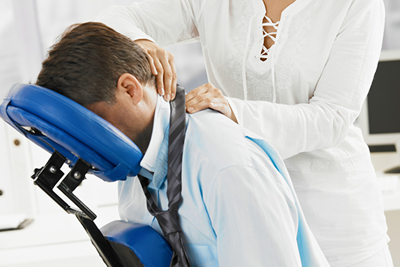Previously only available at spas, resorts, and high-end health clubs, massage therapy is now common within diverse healthcare settings, business wellness programs, events at natural food stores, and elsewhere. Those who are considering this therapy may be surprised by the plethora of ways it can improve health.
Types of massage
Massage is a word that refers to manual kneading of the tissues of the body. The hands are used most typically, but the elbows and forearms are often incorporated, as are the feet and legs in some cases. The extent of pressure differs based on the style and the comfort level of the individual.
Four common categories of massage are:
1. Swedish massage – With this style, the strokes used by the therapist are long, deep, and circular. The goal is to revitalize the body and deliver relaxation to the mind.
2. Deep-tissue massage – With this massage type, the therapist reduces their pace and applies more significant pressure to bring about healing deep within the muscles and fascia.
3. Sports massage – For this type of massage, athletes are treated in a similar manner to the Swedish technique for prevention and recovery from damage while facilitating pain relief.
4. Trigger-point massage – This strategy, also sometimes called myofascial release, is directed toward areas of the body that have become taut and inflexible due to injury or repetitive motion.
How massage helps patients
People often think of massage in terms of stress relief, but physicians increasingly consider it a healing modality. “Massage is generally considered part of complementary and alternative medicine,” explains the Mayo Clinic. “It’s increasingly being offered along with standard treatment for a wide range of medical conditions and situations.”
Along with the benefits for stress relief, massage can help increase circulation, enhance mobility, and even improve mental health.
Studies on massage reveals it could help with the following health conditions:
· Depression & mood swings
· Digestive conditions
· Chronic pain disorders
· Migraine and headaches
· Sleep disorders
· Peripheral neuropathy
· Damage to muscles, tendons, and ligaments
· Athletic injury
· TMJ disorders (affecting the jaw, jaw joint, and surrounding muscles)
As indicated above, people don’t just think of massage as a healthcare treatment and source of pain relief: it can also be a method for relaxation and connection. “Beyond the benefits for specific conditions or diseases,” says the Mayo Clinic, “some people enjoy massage because it often involves caring, comfort, a sense of empowerment and creating deep connections with their massage therapist.”
Convenient massage therapy
Note the description of trigger-point massage above. Muscle knots, particularly those in your neck, are usually the cause of aches and pains throughout the upper body. The experienced therapists at Atlanta Medical Clinic target these muscle groups during chair massage, releasing painful trigger points and delivering relief in conjunction with our other strategies. >>> Learn more

